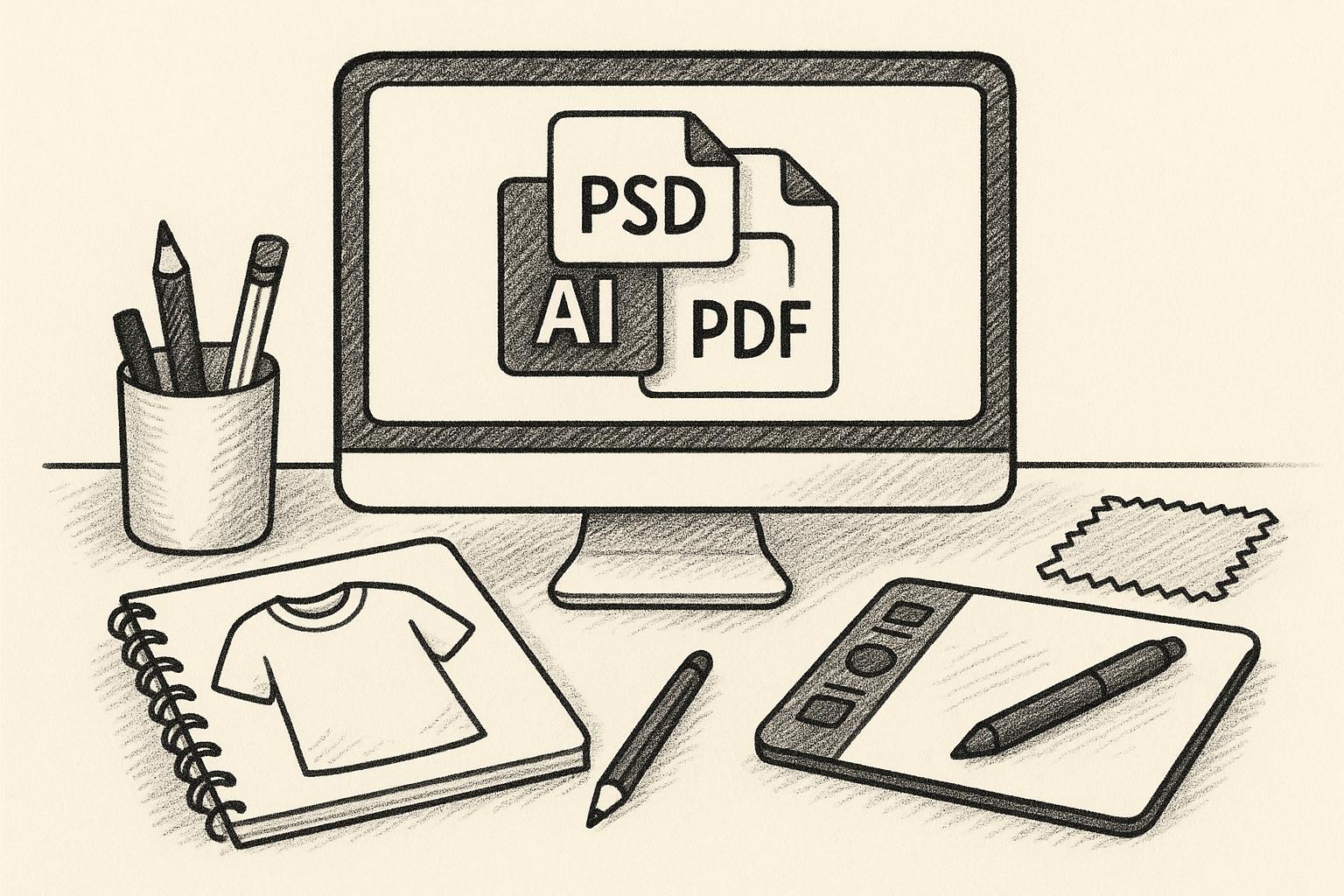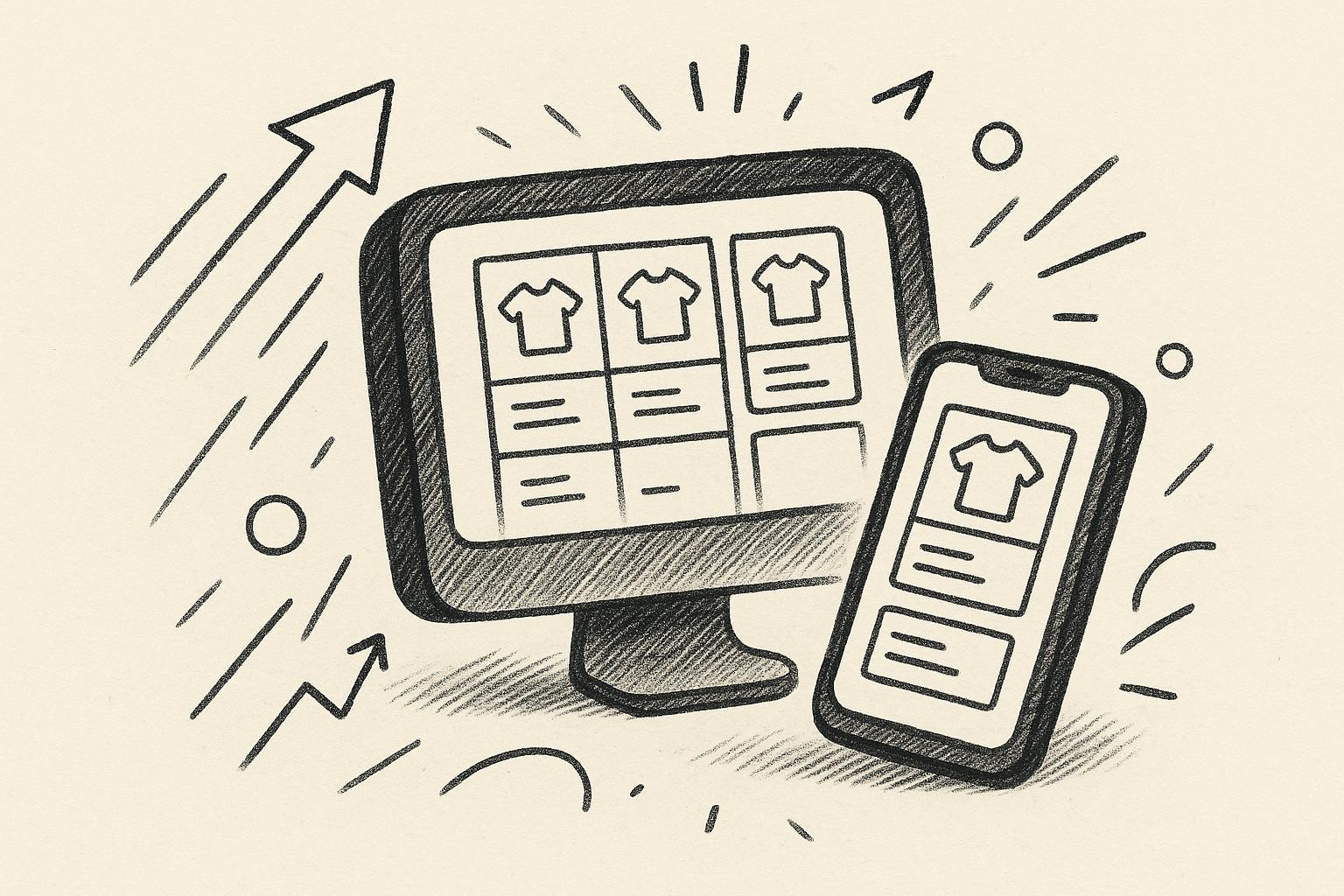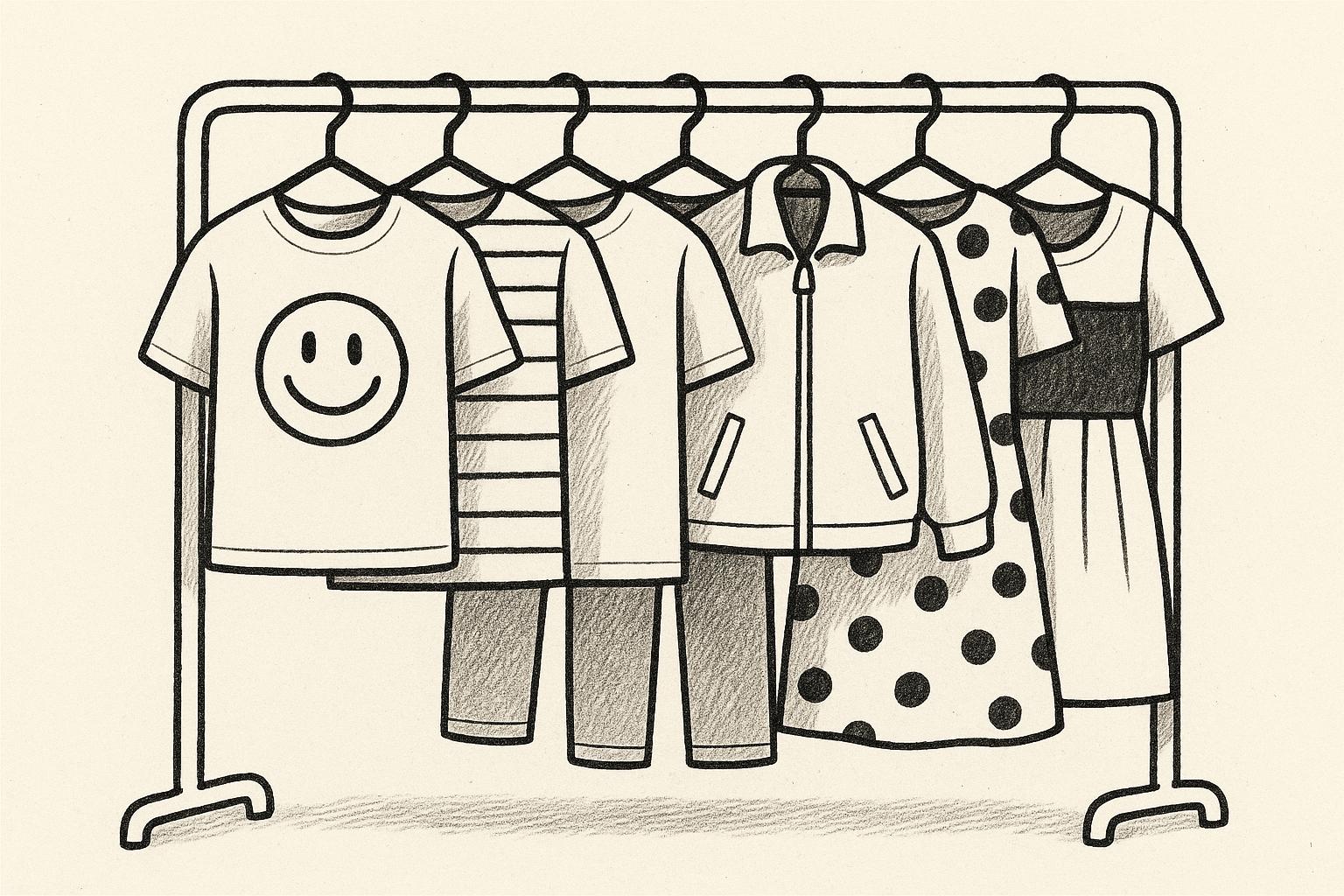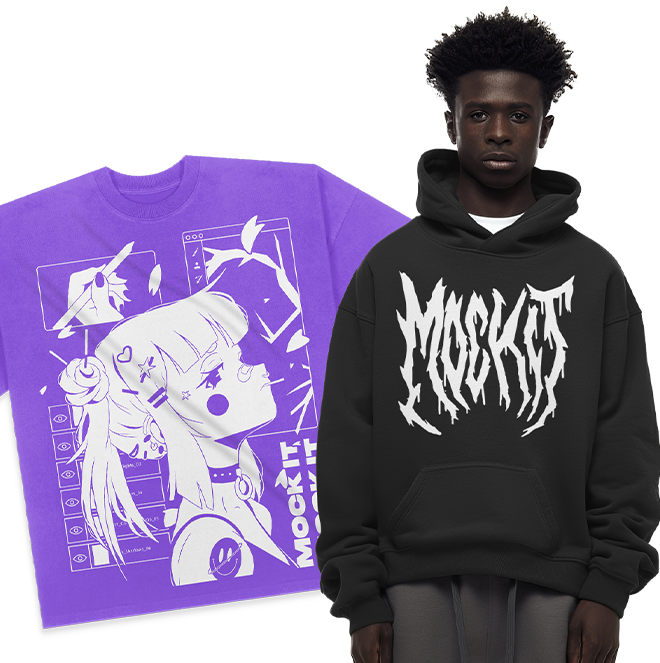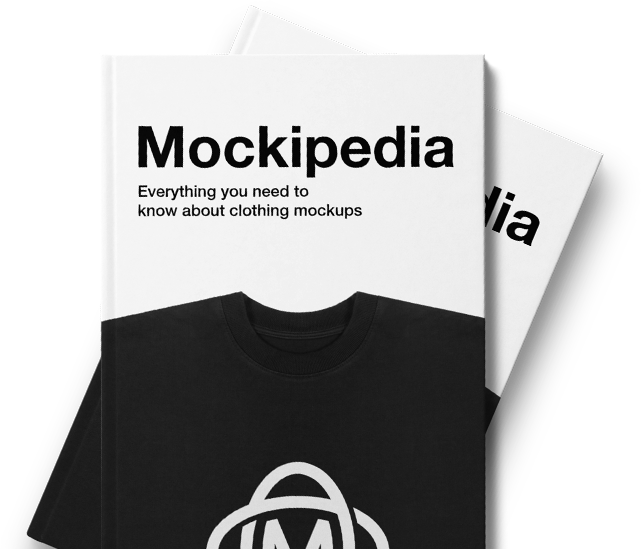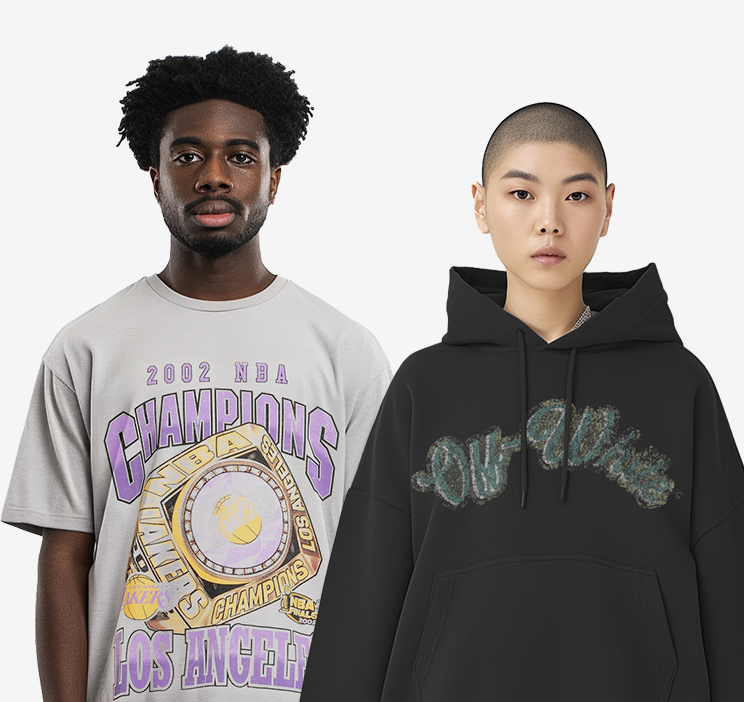Choosing between mockups and product photography depends on your brand’s goals, budget, and timeline. Here’s a quick breakdown:
- Mockups: Digital templates that showcase designs without needing physical products. They’re affordable, fast, and flexible for testing ideas or creating variations.
- Product Photography: Real photos of actual products. They build trust, showcase quality, and create emotional connections but are more expensive and time-consuming.
Quick Comparison
| Feature | Mockups | Product Photography |
|---|---|---|
| Cost | Low (e.g., $11.99/month) | High (e.g., $1,000+/shoot) |
| Speed of Updates | Instant digital edits | Requires reshoots |
| Realism | High but digital | Authentic and tangible |
| Best For | Testing, quick updates | Campaigns, hero products |
Tip: Many brands use both – mockups for speed and cost savings, and photography for key campaigns.
Create Your Own Mockups From Photos!
What Are Mockups and Product Photography?
Understanding these tools is crucial for balancing cost, creative control, and the visual impact of your brand’s story. Each method contributes uniquely to how your brand is perceived. Let’s break down what each entails and their key advantages.
What Are Mockups?
Mockups are digital templates that allow you to showcase your designs – logos, artwork, or patterns – on products without needing physical samples or photoshoots. Essentially, they create a virtual representation of your product, giving you a realistic preview of how your designs will look in the real world.
These templates are especially useful in industries like apparel, where seeing a design on various product styles is essential. You simply upload your artwork, and the mockup instantly generates a polished visual. This approach saves time and money by eliminating the need for expensive photo sessions while enabling quick iterations, color tests, and design tweaks.
For example, platforms like Mock It make this process even easier. They offer over 5,000 high-quality clothing mockup templates from more than 45 brands. With features like scene creators and background removers, you can create professional visuals for t-shirts, hoodies, and sweatshirts – all without having to produce or photograph the actual items.

What Is Product Photography?
While mockups provide efficiency and flexibility, product photography delivers something mockups can’t: tangible authenticity.
Product photography involves capturing real products in real settings, using professional equipment, lighting, and staging to present them at their best. This method goes beyond just documenting a product – it tells a story and builds an emotional connection with your audience.
"Photography provides a product with an identity. Without an identity, you can’t tell a story, and without a story, you’re unable to launch a product successfully. It’s absolutely crucial to a brand’s success." – Adrian Mueller
The power of high-quality product photography is undeniable. Studies show that 93% of consumers consider visual appearance a critical factor in their purchasing decisions. Additionally, 59% of consumers are more likely to buy from brands they trust, and authentic imagery plays a significant role in building that trust.
Product photography also opens up creative storytelling opportunities. Editorial-style shoots can place your products in broader narratives, using props, dynamic angles, and thoughtful compositions. Lifestyle photography, on the other hand, shows products in relatable, real-world settings, evoking emotions like joy, nostalgia, or comfort. Lighting and color choices further shape how customers perceive your brand – soft, warm tones suggest coziness, while bright, sharp lighting conveys energy and excitement.
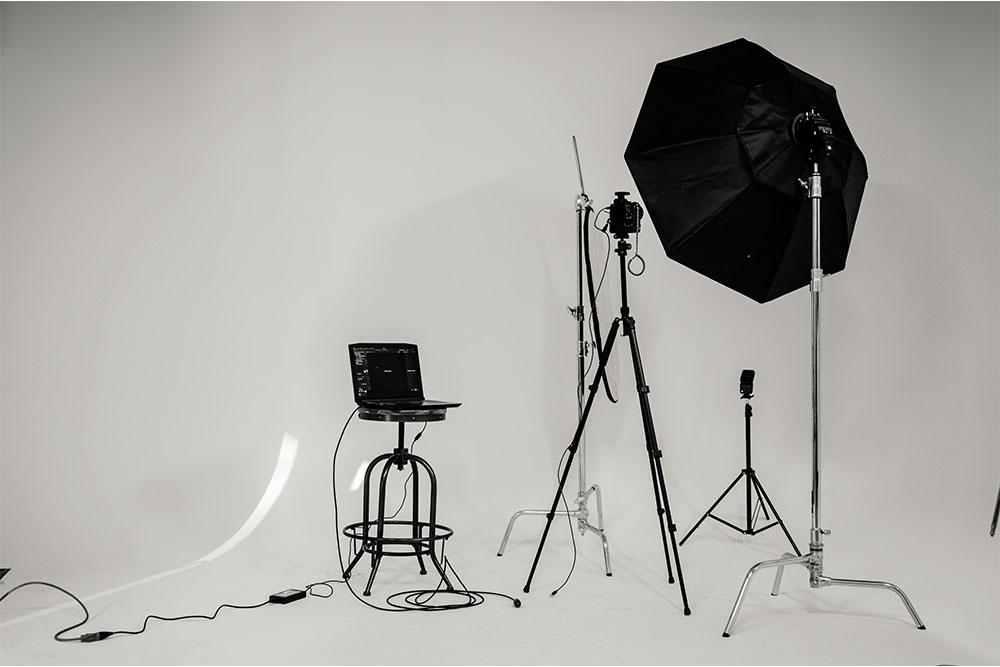
The Role of Both in Brand Storytelling
Mockups excel at showcasing design possibilities, while product photography proves the quality and craftsmanship of your offerings. Each has its strengths, and choosing the right tool depends on your goals, budget, and how you want to connect with your audience. Together, they can help you create a compelling and versatile visual story for your brand.

Cost Comparison: Mockups vs. Photos
Examining the financial differences between mockups and traditional photography can help you make smarter decisions about your visual content strategy. Let’s break down the upfront investments and ongoing costs for both options.
Upfront Costs and Setup
Traditional product photography comes with a hefty price tag right from the start. Freelance photographers typically charge between $100 and $300 per hour, while seasoned professionals can demand $1,000 to $3,000 per day. On top of that, you’ll need to budget for additional costs like hiring models ($750 to $1,000 per day), makeup artists (also $750 to $1,000 per day, plus kit fees), and stylists ($600 to $1,000 per day).
Studio rentals can range from $50 to $200 per hour, and renting professional-grade equipment adds another $200 to $500 per day. Specialized crew members – like lighting technicians ($75 to $150 per hour) and digital file managers ($50 to $100 per hour) – can further drive up costs.
Now compare this to mockup platforms, which offer a far more predictable pricing model. For example, Mock It gives you access to over 5,000 clothing mockup templates starting at just $11.99 per month (billed annually) or $21.99 per month for a Pro plan that includes advanced tools like AI image generation and background removal. This subscription fee is a fraction of what you’d spend on a professional photoshoot. Plus, a 2025 survey showed that 76% of small businesses using AI photography tools saved over 80% on their visual content costs. For brands that need frequent updates, mockups can deliver major savings.
Long-term Costs and Updates
The ongoing expenses of traditional photography can add up quickly, especially when updates are needed. Changing product colors, introducing new designs, or refreshing your visuals typically requires a full reshoot – with all the associated costs. Even basic retouching services run $50 to $100 per hour, and professional ecommerce images cost anywhere from $20 to $50 per photo.
Mockup templates, however, make updates much simpler and cheaper. You can instantly tweak designs without the need for costly reshoots. In fact, virtual photography can bring the cost of an image down to less than $1, compared to $50 to $150 per image for traditional methods. One brand reported slashing its visual content budget by over 85% and cutting its time to market by 75% after switching to mockup templates.
While traditional photography delivers a polished, realistic look, mockup platforms like Mock It offer a budget-friendly alternative with greater flexibility. For brands that need regular updates, the subscription-based model provides a cost-effective way to maintain fresh, engaging visuals without breaking the bank. Balancing these factors is key to crafting a strong, cost-efficient brand presence.
Flexibility and Control Options
After considering cost and visual impact, it’s essential to evaluate how well visuals can adapt to evolving brand needs. Flexibility and control play a major role here, and both mockups and product photography bring unique strengths to the table. Let’s dive into how each option handles customization and aligns with specific brand priorities.
Editing and Customization
When it comes to quick edits and creating variations, mockups are the clear winner. You can effortlessly tweak colors, swap out backgrounds, rearrange layouts, or modify design elements – all without starting from scratch. This digital adaptability makes it easy to test new ideas, update designs, or create region-specific versions in just minutes.
On the other hand, traditional product photography, while delivering unmatched realism, doesn’t offer the same agility. If you need to showcase a t-shirt in a different color or update a background for a holiday theme, you’ll need an entirely new photoshoot. That means coordinating lighting, props, models, and more, which can be time-consuming and costly. However, this method ensures full creative control, allowing you to fine-tune every detail to align perfectly with your brand’s vision.
Tools like batch-processing software further enhance mockups by enabling the rapid creation of multiple variations. For example, with access to a complete color library, you can generate visuals for an entire product line in the time it would take to set up a single photoshoot.
While AI-enhanced photography offers some level of customization, it doesn’t provide the same creative freedom as traditional methods. Adjustments are limited to the constraints of the original photo.
Ultimately, the choice depends on your specific needs for speed and creative flexibility.
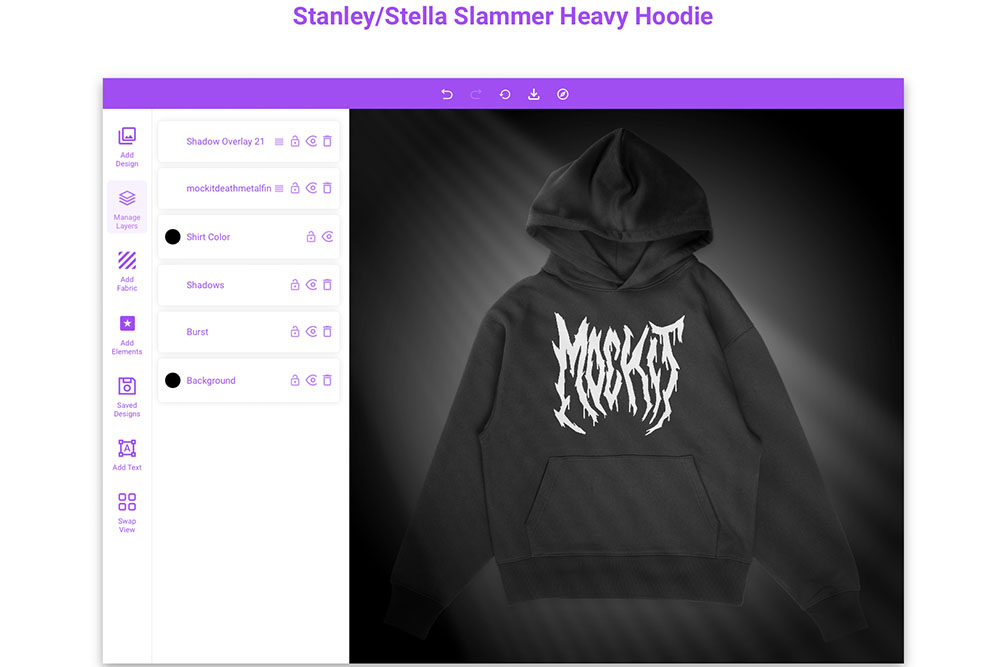
Meeting Brand Requirements
Every brand has its own priorities, and the right approach depends on your workflow and goals. Mockups excel in scalability, making them a great fit for brands with large product catalogs or frequent updates. If you’re rolling out new designs weekly or testing market reactions to different variations, mockups provide the speed and adaptability you need.
For brands that emphasize authenticity and emotional resonance, traditional photography delivers a level of realism that mockups can’t match. The tactile quality of a perfectly lit, professionally styled photo can create a stronger connection with your audience.
Here’s a quick comparison of how the two methods stack up:
| Feature | Mockups | Traditional Photography |
|---|---|---|
| Speed of Changes | Instant digital edits | Requires complete reshoot |
| Color Variations | Unlimited digital options | Limited to physical samples |
| Background Updates | Easy AI-powered adjustments | New setup and shooting required |
| Creative Control | Template-based limitations | Complete artistic freedom |
| Scalability | Highly scalable for large catalogs | Time-intensive for multiple products |
Many brands find that a hybrid approach works best. Mockups are perfect for initial launches, A/B testing, and fast iterations, while traditional photography shines for major campaigns and hero products. This combination allows brands to balance flexibility with authenticity while keeping costs under control.
sbb-itb-1e8f9ab
Visual Impact and Trust
When deciding between mockups and product photography, it’s all about aligning with your brand’s story. The visuals you choose can either draw customers in or create a disconnect, making this decision pivotal for building trust and emotional connections. While both mockups and product photography have their strengths, they achieve their goals in distinct ways.
Realism and Emotional Connection
Product photography shines when it comes to forming genuine connections with your audience. Real photos show products in actual settings, helping customers imagine how these items fit into their daily lives. This creates a psychological link between the product and the consumer’s aspirations.
Authentic photography captures true colors, textures, and details, which builds confidence. For example, seeing the texture of fabric under natural lighting gives customers a better sense of what they’re buying. Additionally, product photos can illustrate movement and functionality – whether it’s how a dress flows, how it fits on different body types, or how it looks in various lighting conditions. These elements help shoppers visualize the product in real-world scenarios.
That said, modern mockups have come a long way. They now include realistic shadows, fabric folds, and reflections that mimic natural lighting. With the right tools, mockups can deliver surprisingly lifelike visuals that bring digital designs to life.
"Using automatic mockup generators has two main perks. The first advantage is that it’s easy to get quality images without putting in a lot of effort. The second reason why we’d recommend it is the fact that you’ll get an accurate image of what your product will look like. The downside of this option is that you are limited by the stock images that the mockup generator provides. You won’t be able to recreate appealing layouts, and it will be harder to find images with a context."
- Aida González Vázquez, Professional designer and author, Creative Fabrica
The key distinction is authenticity versus polish. Mockups often appear sleek and flawless, but this can sometimes feel “too perfect” to discerning consumers. In contrast, real photography, with its natural imperfections, tends to feel more relatable and trustworthy – an important factor for audiences wary of overly processed visuals.
For apparel brands, platforms like Mock It provide realistic templates that maintain brand consistency while offering creative flexibility. Striking the right balance between authenticity and polish is essential for ensuring your visuals resonate across different marketing platforms.
Performance Across Marketing Channels
The visuals you use don’t just influence trust – they also determine how effectively your content performs on various platforms. Whether mockups or photography work better depends on where and how your products are showcased.
Social media thrives on engaging, eye-catching content. Here, real photography often excels by presenting products in relatable, lifestyle-focused contexts. Platforms like Instagram and Facebook reward authenticity, making real photos more likely to connect with users.
Mockups, on the other hand, are ideal for rapid content creation. If you’re launching multiple product variations or testing different color schemes, mockups provide the speed and consistency that traditional photography can’t always match. Interestingly, brands using advanced 3D rendering techniques have seen conversion rates increase by as much as 60% with these visually striking mockups.
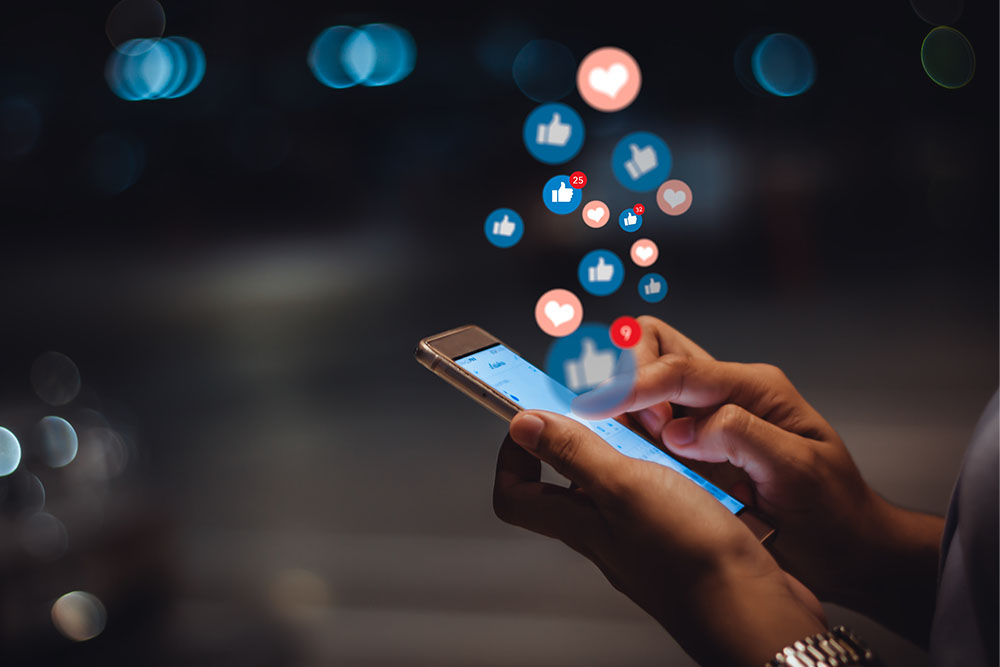
E-commerce platforms demand accuracy and trust. Visuals play a critical role in online shopping, with 93% of consumers citing appearance as a key factor in their purchase decisions. Real photography offers an honest representation of colors and textures, which can reduce returns and improve customer satisfaction.
Mockups, however, excel in managing large product catalogs. They ensure design consistency across hundreds of SKUs, allowing you to control colors, layouts, and branding without the logistical challenges of extensive photoshoots.
| Channel Type | Photography | Mockups |
|---|---|---|
| Social Media | Lifestyle-focused, relatable visuals | Quick updates, multiple variations |
| E-commerce | Honest representation, reduced returns | Consistent branding, cost-effective scale |
| Print Marketing | Premium feel, authentic details | Controlled colors, versatile adjustments |
| Email Campaigns | Personal touch, lifestyle integration | Fast seasonal updates, template consistency |
Print marketing and packaging design present another area where the choice of visuals matters. Take Tiffany & Co.’s iconic blue box, for example – it’s a luxury symbol that studies show encourages consumers to pay more for products in such distinctive packaging. Creating this kind of emotional connection often requires the authenticity that photography provides.
That said, mockups offer unmatched flexibility for brands needing frequent updates or design experiments. Adjusting backgrounds, testing new color palettes, or creating seasonal variations can be done quickly and without the logistical challenges of new photoshoots – making mockups a powerful tool for agile marketing teams.
Many successful brands use a hybrid approach: relying on photography for hero products and major campaigns where authenticity is crucial, while using mockups for everyday marketing, product variations, and testing. This strategy strikes a balance between emotional connection and operational efficiency, keeping costs manageable while delivering high-quality visuals across all channels.
When to Use Mockups vs. Photos
Deciding between mockups and photos often comes down to your brand’s immediate needs and long-term goals. Factors like your business stage, budget, and timeline play a major role in making the right choice.
Your business stage matters. Mockups are a great fit for businesses in their early or growth phases. If you’re experimenting with product ideas, launching variations, or don’t yet have physical inventory, mockups let you bring your vision to life without hefty upfront costs. On the other hand, established brands with a defined audience and polished branding often gain more from professional product photography.
Mockups are cost-effective and quick, making them perfect for testing concepts, running seasonal promotions, or handling tight deadlines. While product photography delivers a more genuine feel, it demands more time and money. When speed is critical – like for seasonal campaigns or last-minute launches – mockups offer an edge that traditional photography can’t match.
Your brand’s values also guide this decision. Mockups are ideal for fast-paced, innovative brands that thrive on quick iterations. Meanwhile, authentic photography reinforces a sense of quality and craftsmanship. As noted earlier, the right approach depends on your product’s stage in its lifecycle. Mockups are perfect for early-stage presentations, e-commerce previews, or when the product isn’t physically available yet. They’re also excellent for testing designs before committing to final production. In contrast, real photos shine in final marketing materials, catalogs, and situations where authenticity is essential. For social media, mockups can offer consistent and easily updated visuals, while e-commerce platforms might see better conversion rates with high-quality product photography.
A hybrid strategy can strike a balance between authenticity and efficiency. Use photography for large-scale campaigns where emotional connection and realism are key, and lean on mockups for projects requiring fast turnarounds or multiple design variations.
For apparel brands, modern mockup tools help bridge the gap. They now include features like realistic shadows, fabric textures, and customizable backgrounds, delivering a professional look without the logistical headache of frequent photoshoots.
Consistency is crucial. Research shows that brands with consistent visuals see an average revenue boost of 23%. Whether you choose mockups, photography, or a mix of both, maintaining a cohesive visual identity across all platforms is essential for effective brand storytelling.
Choosing the Right Tool for Your Brand
Deciding between mockups and product photography depends on your brand’s specific needs, budget, and timeline. Each option brings its own strengths to the table, and when used thoughtfully, both can elevate your brand’s storytelling. Let’s break down how factors like budget, speed, realism, and marketing channels influence this decision.
Budget is often the first consideration. Mockups are a more affordable option, particularly for brands working with tight resources or testing multiple designs. They save on costs tied to equipment, props, models, and studio rentals, which are necessary for product photography. If you’re looking for a cost-efficient way to experiment, mockups are a smart choice.
Speed and flexibility are other key advantages of mockups. They allow for quick production and easy updates. Whether you’re creating multiple product variations or tweaking designs, mockups make it seamless without the need for expensive reshoots. On the other hand, product photography, while delivering a more authentic representation, takes more time due to the planning, setup, and execution involved.
When it comes to realism, product photography stands out for its ability to showcase your products exactly as they are. This level of authenticity can help build trust with your audience. Mockups, while visually impressive, may not always capture the exact details of the final product. However, modern mockup tools have come a long way in closely mimicking the look and feel of real products.
For apparel brands, tools like Mock It simplify the mockup process. With access to over 5,000 high-quality clothing mockup templates from 45+ brands, Mock It makes it easy to create professional visuals in no time. Features like a scene creator, background remover, and AI text-to-image generator help maintain consistent branding across all marketing channels.
"Branding mockups aren’t just tools; they’re the storytellers of your brand’s visual saga." – Carla Deña, Journalist and Content Writer, Penji
Your brand’s stage also plays a role. For newer brands, mockups are a great way to present ideas and create e-commerce previews, especially if your products haven’t been manufactured yet. Established brands, however, often lean on product photography to reinforce their credibility and authenticity.
Finally, consider your marketing channels when choosing between these methods. Mockups are perfect for digital platforms like social media, email campaigns, and e-commerce sites, where quick updates and variations are essential. Product photography, meanwhile, shines in high-stakes materials like print catalogs or campaigns where authenticity is a deciding factor for buyers.
Many successful brands combine both approaches: mockups for fast, adaptable content and photography for cornerstone campaigns. This hybrid strategy balances efficiency and authenticity, ensuring your brand maintains a strong and cohesive visual identity – a crucial element of effective storytelling.
FAQs
How can brands use mockups and product photography to tell a compelling story?
Brands can use a mix of mockups and product photography to tell a compelling visual story that resonates with their audience. Mockups offer a flexible and budget-friendly way to showcase products in different settings. They let you experiment with designs, colors, and styles without needing to create physical items, making them perfect for concept testing or marketing campaigns. Mockups help customers picture how a product might fit into their daily lives.
On the flip side, product photography captures the real deal. It emphasizes the product’s authenticity and quality, building trust and sparking emotional connections by showing the item as it truly is. When used together, mockups and product photography strike a balance between imaginative storytelling and genuine representation, creating a strategy that draws customers in.
What challenges can arise from using only mockups for brand visuals, and how can you address them?
Using mockups for brand visuals can sometimes create challenges, such as misrepresenting the product or delivering inconsistent quality. Mockups don’t always reflect the exact appearance or feel of the finished product, which could leave customers feeling disappointed. Plus, if mockups are poorly designed or of low quality, they might make your brand seem less professional and damage its credibility.
To avoid these pitfalls, make sure your mockups are clear, polished, and high-quality, and always label them as representations rather than actual products. Whenever possible, pair mockups with real product photos to offer a more accurate and trustworthy depiction. Regularly reviewing and testing your designs can also help you spot issues early, ensuring your visuals meet your brand’s standards and resonate with customer expectations.
When should a brand choose product photography over mockups, despite the higher cost?
Product photography works best when a brand needs to highlight its products with sharp detail and lifelike accuracy. This is particularly important for items where features like texture, precise colors, or intricate designs matter – think luxury goods or premium fashion. By presenting these products in relatable, everyday settings, customers can better imagine how they’d fit into their own lives, creating a sense of connection and trust.
On top of that, professional photography can give a brand a more polished and credible appearance. High-quality images not only grab attention but also drive better customer engagement, boost conversion rates, and strengthen brand identity. For many businesses, these benefits make investing in professional photography a smart choice.

